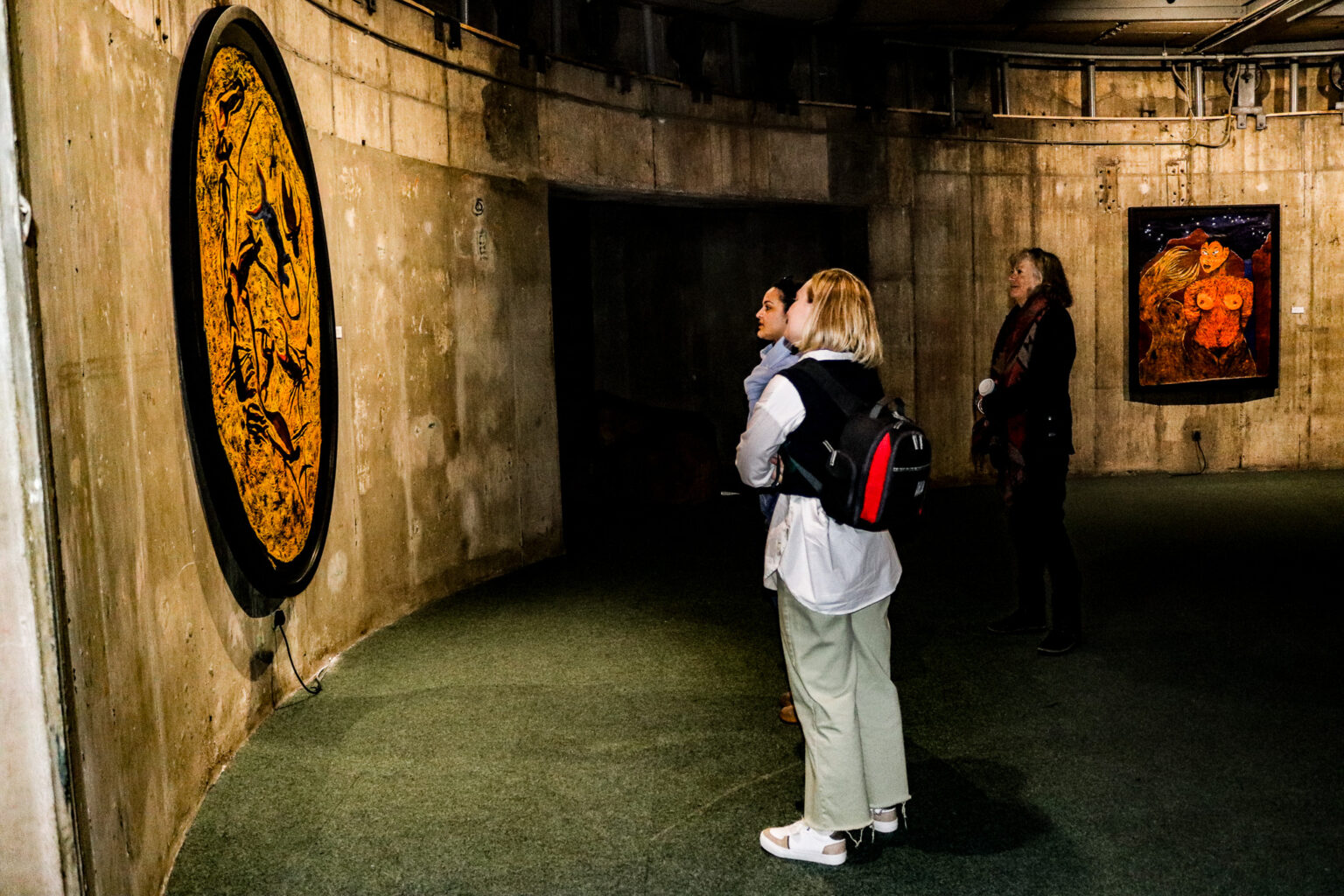By Bukamuso Sebata
Having recently given birth, the artist is unable to make the opening of her own exhibition. Instead, a video recording fills the space. Inspired by personal events, Laura Windvogel-Molefi, a.k.a Lady Skollie, takes the audience on a journey where imagination and artistry become tools to fill the void left by a forgotten heritage.
Titled Groot Gat, the solo exhibition by this year’s Standard Bank Young Artist Award winner for Art, is a thought-provoking and visually captivating showcasing that delves deep into the complexities of cultural identity and the impact of history, oppression, and colonialism.
Even virtually, Windvogel-Molefi is able to captivate her audience through the narrative her art produces. The artist’s words resonate, emphasising the existence of a cultural void that needs to be filled with stories, traditions, and new creations. Through the medium of paint, she reconstructs a world where the indigenous cultures of the San, Koi, Griqua, and other brown communities flourish without the disruptive influence of colonialism.
The concept of large, vibrant cave drawings becomes a symbol of reclaiming cultural heritage and shaping new narratives. The stories unfold around Boesmansgat, a deeply submerged freshwater cave in the Northern Cape, previously known as a fishing hole for indigenous peoples. Now, the site attracts thrill-seekers who challenge nature by deep-diving. Frequently, these divers get lost, as do the rescuers sent after them.
The cave has become a legend; a folklore parents use to scare their kids at night. The story goes that the hole is guarded by Dada, a mythical deity depicted as a painter and guardian of a deep, mysterious realm. In Windvogel-Molefi’s narrative, Dada spends her days and nights drinking Black Label and painting beautiful cave paintings to draw in souls before snatching them off the face of the earth.
Unlike in folklore, what lies on the other side is not darkness and evil but a realm of imagination and fantasy merging with reality. In the painting ‘Bait Mirror’ the artist paints demonic piranhas with wide open mouths reaching to swallow humans who fall under Dada’s spell. The painting echoes tales told to children to scare them into staying away from Boesmansgat, often hindering their cultural awakening.
The exhibition seamlessly weaves together elements of folklore, history, and personal anecdotes to create a tapestry of identity, thus emphasising the importance of embracing one’s heritage and reclaiming the power to define oneself. The artist encourages the audience to dive into the unknown, allowing themselves to be consumed by the journey, ultimately emerging from the show with a stronger sense of self and a deeper connection to their roots.
Overall, Groot Gat is a thought-provoking and visually stunning production which will deeply resonate with audiences. It is a brilliant example of art as a tool for self-reflection and the reclamation of cultural identity.
Groot Gat can be viewed at the Gallery in the Round, Monument, until 2 July.


